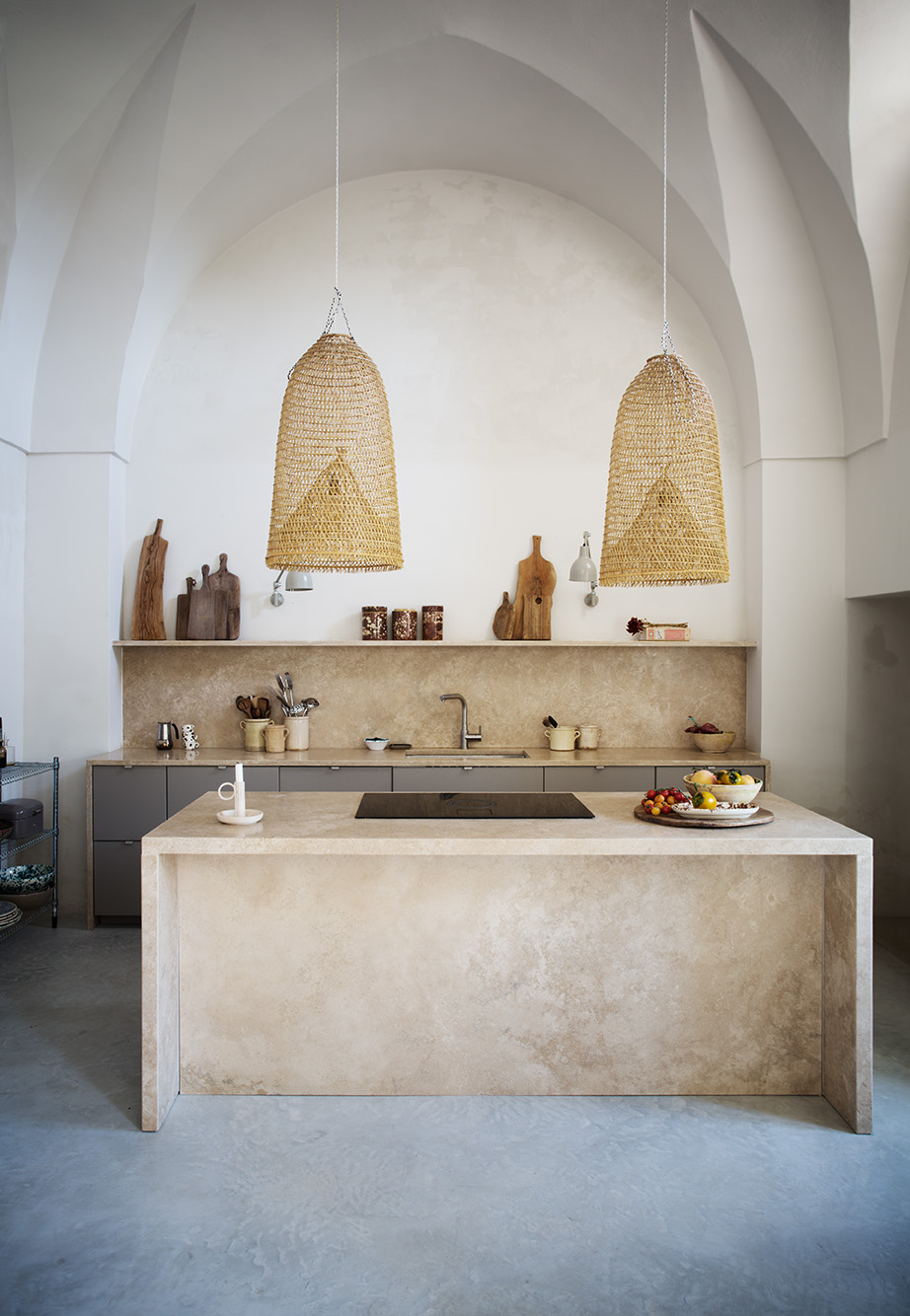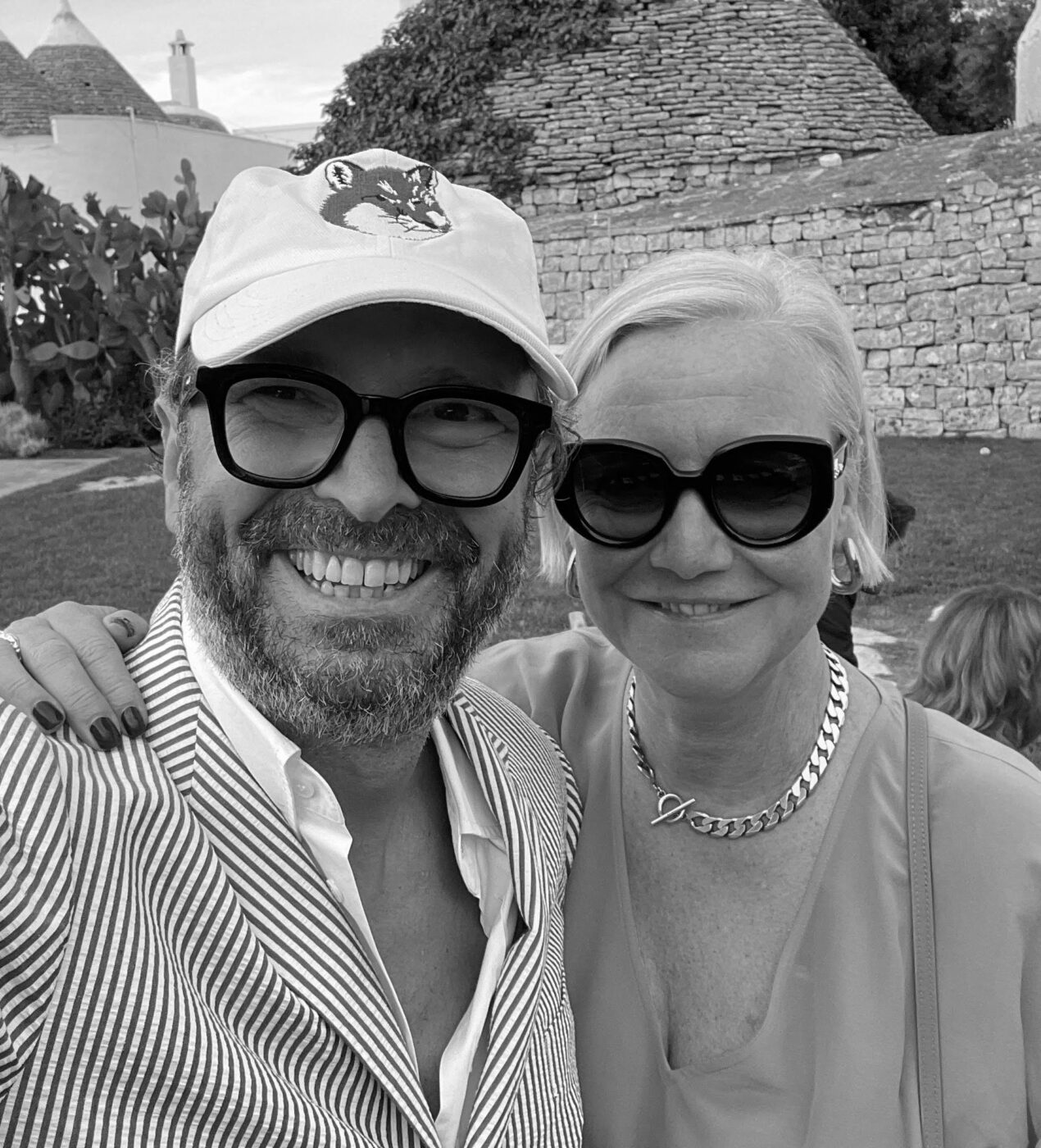“I left Italy for love,” says Claudio Pizzelli, born-and-bred Milanese and Art Director of Stockholm’s leather goods brand ATP Atelier–the stuff of your Scandi-style dreams. After meeting his powerhouse wife Maj-La–co-founder, CEO, and Creative Director of ATP–we can see why. “Maj-La is practically Italian too at this point,” Claudio tells us with a laugh, citing her Italian family and long history of travels to the boot. Luckily, Claudio and Maj-La are never far from Italy, splitting their time between Stockholm and Salento, Puglia, where they have their second home, Casa Pizzelli. “We have the best of both worlds.”
“Best of both worlds” is how you might describe ATP as well–a brand that marries the quality of Italian craftsmanship with the clean lines and minimalist style of Scandinavian design. The result is a timeless collection of shoes, bags, and small leather goods that places sustainability front and center. The leather, reclaimed from the food industry, is vegetable tanned, meaning that it’s biodegradable at the end of its life span; the process is non-polluting and uses 98% recycled water. Everything, from the signature Rosa cutout sandals to the Liveri hobo bag, is produced in Tuscan laboratori, small businesses with up to just 20 employees. “We want to protect the Italian artisanal tradition of handmade leather goods that’s been handed down for generations,” reads ATP’s website.
We sat down with the couple–effortlessly chic in their quasi-matching white button downs and chunky black frames–to chat about the expat lifestyle, finding Italy in Stockholm, and how ATP all started with a sandal.

Italy Segreta: What do you miss most about Italy when you’re in Stockholm?
Claudio Pizzelli: Sweden is very different from Italy. The most apparent is the weather… But also there’s not as “easy” of a culture here. You don’t socialize in the same way; it’s not as open or easy to meet people. Swedes keep to themselves more. I also miss going to San Siro to watch Inter matches every other weekend [though Hammarby IF Football at the Tele2 Arena comes close!]. It’s difficult today to create relationships like the ones you form when you are younger. I miss the lightheartedness and humor; Italians are more easygoing. I’m thankful I have another Italian in the ATP Atelier office, our designer Chiara. We understand each other. [He laughs.]
IS: Does that mean it’s been difficult to create an Italian community there?
CP: When I moved to Sweden, I didn’t really feel the need to be together with other Italians. I wanted to embrace the new culture. But I soon realized that my Italian roots were growing even more; I felt even more Italian and cared much more about Italy than when I was actually living in Italy. At that time, there were just a few Italians who had moved to Sweden in the ‘60s and ‘70s, and most of them had restaurants or pizzerias. So I was quite a new kind of Italian “guest”. I felt like I was the only one. But in the last 10 to 15 years, a lot of young Italians have been coming to Stockholm–a new generation of architects, designers, and doctors. At our coffee place [Il Caffé], we meet a lot of younger Italians.
Maj-La Pizzelli: It’s not run by Italians–and the coffee is not as good as in Italy, to be honest–but the vibe is just like that in Italy. When you go there, you meet new friends and somehow everyone connects to each other; we have a big community of people we met from seeing each other there. It started like a rumor, and more and more Italians began coming to Il Caffé, because it’s very much representative of Italian culture. Swedish people are not as extroverted as Italians are, but in this coffee bar, the culture is different–also thanks to the friendly owner Jacob. Now you just turn up and usually you meet someone that you know.
IS: Is the coffee cheap as well?
CP&MP: [They laugh.] Nope, it’s crazy. Coffee is really expensive in Sweden; it’s an Italian privilege to have cheap coffee!

IS: Beyond coffee, what are some habits you haven’t let go of to live the Italian lifestyle in Stockholm?
CP: The most important thing for me to hold on to is the food (and coffee) culture of Italy. It’s about what we eat, which is mostly Italian. But also how we eat. No cappuccino after noon is something that I continuously try to educate Swedes about. Aperitivo is also something I miss dearly; it barely exists in Stockholm [find the few places where it does exist in Claudio and Maj-La’s guide to Stockholm here]. I’ve also been going around town on my Vespa since I moved here 41 years ago. It’s not a very common means of transportation in Stockholm. I think when I pull up on my Vespa with my curly hair, complaining about cappuccinos after noon, some people think I am a caricature of an Italian man. I listen to a lot of Italian music and radio, most often “The Vibe” on Radio Capital with Massimo Oldani. It makes me feel at home. I think there’s also something very Italian about my humor that I refuse to let go of–practical jokes or very ironic jokes that don’t go over very well with Swedes.
IS: You can really feel this connection to Italy in your brand, ATP Atelier, too; tell us more about the link you’ve created.
MP: Just like for me personally, ATP Atelier’s connection to Italy is just as strong and important as the one we have with Stockholm and Scandinavia. The idea for ATP Atelier was literally born in Italy, in Otranto. I was there for vacation with family and friends. All of us got sandals for the summer from local artisans. We were so in love with the craftsmanship and the quality. But when we got back to Stockholm, they felt irrelevant from a design point of view. We realized no one was combining the heritage of Made in Italy with the clean lines of Scandinavian style. So, ATP Atelier was born. Till this day, all of our collections are made by hand in Tuscany. Our suppliers are family-owned businesses–and are more like our family and business partners than anonymous factories. And it’s not only the product; the brand is surrounded by a lifestyle that is very Italian. It’s focused on the good things in life. It is easygoing; it has humor and integrity. The ATP Atelier lifestyle, which I’ve named Smart Luxury, is the same lifestyle that me and Claudio live. We are truly living the brand.

Maj-La and Claudio Pizzelli home in Puglia - @salentodreams
IS: Absolutely! Speaking of living the lifestyle, how did you land on Puglia for your second home?
MP: When we met, we shared a love for traveling and seeing new places; I had traveled a lot in Italy as a kid because both my aunts are married to Italians and all my cousins are Italian. At some point, we said, “Oh my God, there are so many beautiful places to see in Italy. So let’s try to make it a life project to see as many as possible.” That said, we also love to put things on repeat when we like them. We went to Maremma for 20 years, and then in 2005, one of our close friends recommended Puglia. Few people were talking about Puglia at this time. We fell completely in love. It felt like all the best of Italy in one place. It also felt like the Italy of the 1960s and ‘70s I’d seen as a kid. So we’ve come back and back and back and back every year since 2005. In 2018, we decided to buy; we started an Instagram account [@salentodreams] around the house’s renovation project because so many friends kept asking for photos.
IS: Where did you get your design inspiration for the house?
CP: We have always been interested in interior design, so we really had a quite clear idea of what we wanted to have.
MP: We really wanted to have an old house. We wanted to have something with character. The vision, like ATP’s, was combining Scandinavian minimalism with a love of details that is very much Italy. We’ve really celebrated the vibe of Puglia, but with an interior that’s very Scandinavian. The inspiration came from everything from a Scandinavian house in the archipelago to Palazzo Daniele.
CP: For the people living in this town, the house was quite well known. So everybody was really curious about what we’d done. They were so grateful that we kept the original features like the floor and the frescoes.
IS: Are you able to find a bit of Puglia in Stockholm? How has Italian presence in the city evolved since you’ve been there?
CP: I’ve been living there since 1984, and there have been huge changes since then. Back then, you couldn’t buy espresso; you could buy some spaghetti, but it was very bad quality. There was this grocery store, run by a Spanish guy who was pretending to be Italian. When we spoke to him in Italian, he really tried to speak Italian back. It was funny, but he actually knew his stuff; his products were great, and he was one of the first to bring in all the Italian goods and ingredients. Now, as of the last 10 years, you can find everything–almost. It’s not so cheap though.
MP: We used to bring everything back up with us from Italy, filling the car with olive oil, cheese, and pasta. You can now find these things in Stockholm, but I still like to go to the market in Puglia and buy nuts and legumes–we always have the basics in our pantry at home. It’s like our own grocery. We also do this thing where we buy a lot of olive oil every summer, and all our friends and family can put an order in. So we can share the cost of the freight.
IS: That’s the real Italian way!
MP: Claudio is the one who’s 100% Italian; I grew up in Sweden with these Italian aunts. But the funny thing is, when I was a kid, I didn’t eat. I just was not hungry… except when we went to Italy. Then I would stuff myself with vongole, other seafood, everything. My first experience with Italy really was the food. It was an eye opener for me. When I would go home, I would just chew, go through the motions, until I could come back to Italy and eat like crazy. Italian food awakened my appetite.
IS: We think a lot of people will relate to that.



